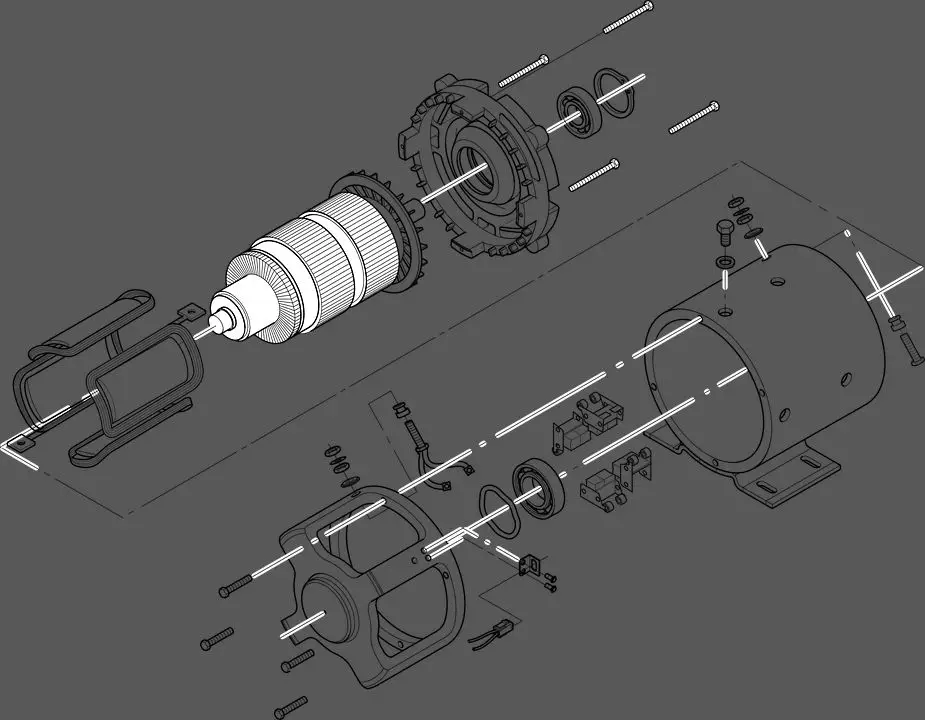How Do I Get Better At Fixing Things?
Assess Your Current Skills
Before trying to improve your fixing skills, it’s important to first take an honest inventory of what you can already repair successfully. Assessing your current skill level provides a baseline to measure future progress (https://blog.avilar.com/2020/05/20/what-is-a-skills-assessment-and-why-is-it-important/). Be honest with yourself about the types of repairs you struggle with or avoid entirely. Knowing your strengths and weaknesses will allow you to focus your efforts on the problem areas.
For example, you may feel confident fixing small appliances or doing minor plumbing repairs. But repairing automobiles or working on major home remodeling projects may be outside your comfort zone. Don’t let ego get in the way – be realistic about what you can and cannot fix given your current skill level. This assessment process is not about judgment, but rather about identifying opportunities for growth.
Pinpointing gaps in your knowledge through self-evaluation is an important first step in getting better at fixing things. Once you know where you need to improve, you can develop a plan to expand your skills in a focused and efficient way (https://www.cmu.edu/teaching/designteach/teach/priorknowledge.html). Be patient with yourself, and don’t be afraid to ask for help identifying weak areas. An honest self-appraisal will pay dividends as you work to become a more capable and confident fixer.
Start Small
One of the best ways to start improving your repair skills is to begin with easy fixes before moving on to more complex projects. As the old saying goes, you have to learn to walk before you can run. Attempting easy DIY repairs can help build your confidence and teach you repair basics without the stress of tackling something over your head right away.
Some examples of introductory repairs include replacing batteries, changing air filters, patching holes, fixing cabinet hinges, tightening loose screws, or swapping out lightbulbs. Focus on minor fixes around the house that only require simple tools and basic techniques. As you successfully complete these smaller projects, you’ll start developing the skills and experience needed for more advanced repairs down the road.
The key is to start simple, be patient with yourself, and work your way up. With each new repair, you’ll learn valuable techniques like troubleshooting issues methodically, reading instructions, using tools properly, and understanding how things are assembled and disassembled. Before you know it, you’ll have the confidence to take on far more complex fixes.
Gather the Right Tools
Having the proper tools is essential for successfully completing repairs and fixes around the home. Investing in basic tools like screwdrivers, wrenches, pliers, and other hand tools provides you with the equipment needed for a wide variety of jobs. As the old saying goes: “use the right tool for the right job.”
When buying tools, it pays to invest in quality. Well-made tools from reputable brands may cost more upfront but they will last much longer than flimsier bargain options. Brands like Craftsman, Klein Tools, and Snap-On are known for making durable and reliable hand tools. Purchase tools with solid construction, made of steel or chrome vanadium. Also look for cushioned, ergonomic handles for comfort.
Start with a basic toolkit containing a set of screwdrivers (flat head and Phillips), adjustable wrenches, slip joint pliers, locking pliers, and potentially a hammer. Add specialty tools over time as needed. Building up your collection of quality tools takes an initial investment but is worth it for those able to handle repairs and maintenance themselves.
Proper tool storage like a toolbox or chest helps keep tools organized and easy to find. Outline a plan for what essential tools to buy first before purchasing more advanced power tools or specialized equipment. With core tools in hand, you’ll gain confidence to take on more fix-it projects around the home.
Study Repair Manuals
One of the best ways to learn how to fix things is to read the manufacturer’s repair manuals. These guides provide step-by-step instructions on how to take apart products and make repairs. They often include useful diagrams showing the location of parts and how they fit together. By carefully studying repair manuals, you can gain valuable insights into how devices work and what can go wrong.[1]
In addition to manuals, look for online how-to videos that demonstrate repair techniques. Watching an expert make fixes and adjustments can help you learn proper procedures. Pause videos frequently to fully understand each step. With both manuals and videos as references, you’ll absorb the knowledge needed to become skilled at repairs.
1. https://www.clipon.io/overcoming-the-challenges-of-long-lasting-equipment/
Practice Disassembling Things
One of the best ways to learn how things work and improve your repair skills is to practice taking things apart and putting them back together. Start with something simple like an old radio or toaster. Carefully disassemble it, taking pictures or making sketches along the way so you know how everything fits together. Pay attention to how components connect and interact with each other. As you disassemble, look for any worn, broken, or defective parts. Then, try to reassemble it back to working order. With practice, you’ll gain valuable hands-on experience and become more adept at diagnosing problems.
It’s also informative to take apart modern devices like cell phones, tablets, or laptops. Newer electronics may have smaller components, delicate ribbon cables, and more integrated circuits. Attempt to fully disassemble something, identify the parts, and then reassemble it. Having the repair manual can be extremely helpful. While you may not be able to fix everything, methodically taking gadgets apart and putting them back together will build your technical skills and troubleshooting abilities.
Troubleshoot Methodically

Approaching problems systematically and methodically is key to accurately diagnosing issues when fixing things. Instead of randomly trying different solutions, take the time to narrow down the root cause of the problem through careful testing and observation.
Start by gathering as much information about the issue as possible. Note any error messages, listen for abnormal sounds, or pay attention to lights/indicators. Recreate the problem if needed to observe it again. Consider the conditions and sequence of events leading up to the issue.
From there, test potential failure points one by one and rule out possible causes. Swap parts or components to isolate the fault. Check connections and interfaces. Gradually work backward from the point of failure until you uncover the source.
Pinpointing the true root cause instead of just the immediate symptom is key for fixing things reliably. Taking a methodical approach often reveals hidden issues that may otherwise be overlooked. While it requires patience upfront, methodical troubleshooting saves time and frustration compared to randomly trying solutions until one works.
Consult Experts
Turn to experienced repair professionals when needed. If you encounter a repair that is too complex or requires specialized knowledge, don’t be afraid to seek help from an expert. A seasoned professional like a contractor, electrician, or plumber can walk you through repairs and maintenance tasks that are beyond your skill level. Paying an expert for an hour or two of guidance can save you from making costly mistakes if trying to DIY. While part of learning to fix things yourself is building confidence through practice, knowing when to call in a pro is also important. Professional input at key stages of a project can make sure you get the job done right.
Have an expert walk you through a complex repair. You can hire a professional to not just complete the repair for you, but to teach you. Some handymen offer instructional services where they talk you through a project step-by-step, explaining what they are doing and the reasoning behind it. This allows you to gain hands-on experience while benefiting from their expertise. Being guided through unfamiliar repairs builds knowledge that gives you confidence to try it solo next time. It transforms repairs from intimidating to within your capabilities. Pay attention to techniques, tools used, safety measures, and the sequence of steps. Learning directly from a seasoned pro accelerates your DIY skills.
Be Patient With Yourself
Developing repair skills takes time and patience. Don’t expect to become an expert overnight. Allow yourself time to learn and gain experience without getting frustrated. As one article points out, having patience enables positive learning and growth. Rushing the process or getting upset about setbacks will only hinder your progress.
Remember that even experienced technicians needed years of practice to develop their skills. Don’t compare yourself to someone who has been fixing things for decades. Stay focused on your own growth and celebrate each small success. With patience and persistence, your abilities will improve over time. Maintain a growth mindset rather than expecting immediate perfection.
Additionally, don’t allow occasional mistakes or failures to discourage you. They are part of the learning process. As long as you learn from your errors, they will make you better in the long run. Patience means giving yourself grace and focusing on the long-term goal of mastering repairs rather than demanding instant results. By embracing patience, you’ll be able to develop impressive skills while avoiding unnecessary frustration.
Invest in Your Education
One of the best ways to improve your repair skills is to invest in some formal education. Consider taking classes at a local community college or trade school. Many offer introductory courses on home repair, construction, electrical work, plumbing, and more. For example, Cuesta College offers hands-on classes where you can gain experience doing basic home repairs under expert supervision (https://www.reddit.com/r/SLO/comments/1686cs8/where_can_i_take_classes_to_learn_basic_home/).
You may also look into a longer trade school program to develop your skills. Programs in fields like construction, electrical, HVAC, and mechanics can provide in-depth, practical training to prepare you for a career in repairs and maintenance. The time and financial commitment of a trade program is an investment that can pay off with lifelong knowledge and job opportunities.
No matter where you choose to take classes, look for opportunities to practice hands-on skills in a workshop environment. Applying your learning will make it much easier to retain and build confidence. Don’t be afraid to ask questions and learn from the experience of teachers.
Keep Challenging Yourself
One of the best ways to improve your repair skills over time is to continuously challenge yourself by taking on new projects. As you gain experience fixing certain things, look for opportunities to apply your skills to new items. For example, if you’ve gotten good at repairing electronics, consider trying your hand at small engine repair. If you can fix a bicycle, try maintaining a lawnmower. Pushing the boundaries of your knowledge will force you to learn new techniques and expand your abilities.
It’s also important to continuously expand your repair knowledge by studying new subjects. Look for repair manuals, videos, online tutorials and courses that cover skills adjacent to your current expertise. Attend classes at a community college or trade school to pick up new repair skills. For instance, you may take an automotive technology course if your background is mainly in computer repair. Absorbing new repair knowledge will make you a more versatile and capable fixer.
Finally, don’t let your skills atrophy once you’ve reached a certain level. Look for ways to stay sharp by taking on challenging projects or learning complex repair techniques. Maintaining and improving your abilities takes constant effort, so always strive to go beyond your comfort zone.



